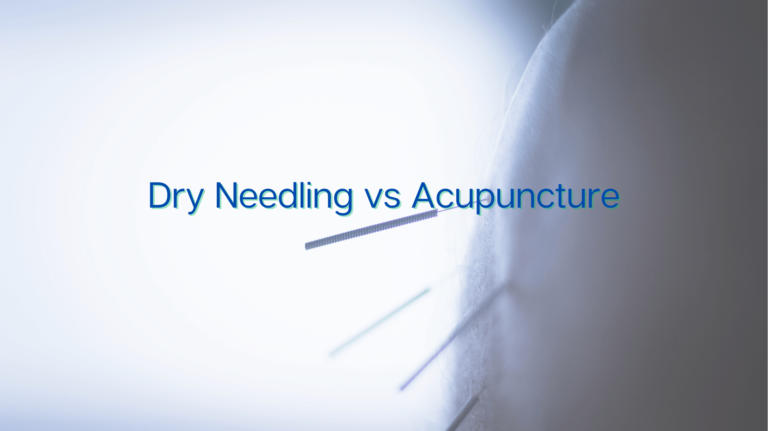Reading Time: 4 minutes
Dry needling is a technique used by physical therapists, chiropractors, and other healthcare professionals to treat myofascial pain syndrome and trigger points in muscles. During this procedure, a solid filiform needle is inserted into the skin, muscle, and connective tissues to stimulate underlying myofascial trigger points, muscular knots, or nerve tissues. The goal is to restore normal muscle function, reduce pain, and improve range of motion.
While considered a safe and effective treatment when performed by a trained practitioner, one potential risk of dry needling is accidentally touching or hitting a nerve with the needle. Nerves run throughout the body and are bundled in sheaths or fascia. When a dry needle comes into contact with a nerve, it can cause temporary irritation, inflammation, and neurological symptoms.
Common Symptoms When A Nerve Is Hit During Dry Needling
Some of the most frequent symptoms that occur when a nerve is hit by a dry needle include:
- Sharp or shooting pain – This sudden, intense pain radiates out from the site of needle insertion. It may feel like an electric shock or lightning bolt sensation.
- Numbness or tingling – A feeling of pins and needles, numbness, or loss of sensation around the needle site or extending out along the path of the affected nerve. This occurs due to irritation of the nerve.
- Radiating pain – Pain that travels along the course of the nerve, either shooting upwards or downwards from the needle insertion site. For example, hitting the sciatic nerve can cause pain radiating down the leg.
- Muscle twitching or spasms – Involuntary contractions of the muscle fibers innervated by the irritated nerve. The muscle may visibly move or twitch.
- Burning sensation – A hot, burning feeling around the needle insertion point or along the nerve pathway.
These symptoms can range from mild and temporary to more severe depending on the degree of nerve irritation. The pain is often described as sharp, shooting, electric, radiating, or burning in quality.
What Causes These Nerve Symptoms?
When a dry needle makes direct contact with a nerve or pierces its connective tissue sheath, it causes localized inflammation and irritation. Nerves transmit signals through axons, surrounded by myelin sheaths that act as insulation. A dry needle can disrupt this protective sheath and expose the nerve axon, making it more sensitive and easily stimulated.
Even slight pressure or irritation of a nerve from a needle can trigger nociceptors, the pain-sensing nerves in connective tissues. This generates a burst of neural signals or “action potentials” felt as sharp pain, akin to hitting your “funny bone.”
Surrounding muscle fibers connected to the affected nerve may also twitch or spasm involuntarily. All these effects are due to neurophysiological reactions as the nerve responds to the acute injury.
Is Hitting A Nerve Dangerous When Dry Needling?
Mostly, hitting or irritating a nerve with a dry needle is not dangerous, especially when properly addressed. The symptoms, while unpleasant, are generally temporary. Once the needle is removed, the nerve can recover and pain dissipates as inflammation resolves.
However, it’s important to communicate with your physical therapist or practitioner right away if a nerve is struck so they can promptly withdraw the needle and monitor your response. Leaving the needle in place could potentially worsen nerve inflammation.
Persistent numbness, tingling, weakness, or severe nerve pain after dry needling may indicate more serious nerve injury and should be evaluated. Extended compression of a nerve can sometimes cause neuropraxia, a temporary loss of nerve function. But this is exceedingly rare with dry needling when proper technique is used.
How To Manage Nerve Symptoms After Dry Needling?
Here are some ways your healthcare provider may manage and treat nerve irritation following dry needling:
- Remove the needle – The first step is gently and steadily withdrawing the needle when nerve symptoms occur. This helps alleviate further irritation or pressure on the nerve.
- Observation – Your physical therapist will observe your response after needle removal, assess any lingering symptoms, and monitor for potential complications.
- Rest the area – Avoiding repeat injury or stress to the affected nerve gives it time to recover. A gentle massage or heat pads can also help.
- Pain medication – Over-the-counter anti-inflammatory medication like NSAIDs may provide relief from nerve-related pain.
- Modify treatment – Your practitioner may avoid needling certain tender points near irritated nerves in future sessions.
- Referral for evaluation – If nerve problems persist after 2-4 weeks, your doctor can check for underlying neuropathies.
- Physical therapy – Stretching, exercises, and modalities like electrical stimulation or ultrasound may aid recovery after nerve irritation.
With proper aftercare, most symptoms resolve within a few hours up to 7-10 days at most. If nerve problems last longer than 4 weeks, further medical assessment is recommended.
Prevention Tips To Avoid Hitting Nerves
There are some technique precautions physical therapists can take to lower the risks of touching nerves during dry needling:
- Use thinner gauge needles – Finer needles up to 36 gauge tend to push nerve fibers away rather than puncture the nerve sheath.
- Angle needles obliquely – Inserting at an angle diverts the needle away from nerves that lay perpendicular to tissue.
- Avoid needling over superficial nerves – Some nerves like the superficial radial nerve are easily struck by superficial needling.
- Identify high-risk areas – Needle carefully around nerves like the femoral, cervical, or sciatic nerves.
- Stop if nerve symptoms occur – Carefully withdraw the needle if sharp or radiating pain is felt.
- Use ultrasonography – Visual guidance with ultrasound helps avoid dense nerve regions.
- Assess sensibility – Check for numbness to identify problem areas.
- Communicate with patients – Encourage speaking up about discomfort early.
Though not always avoidable, following precautions and best practices can reduce the incidence of irritated nerves. Most physical therapists are highly trained to needle safely around neural structures. Still, an occasional encounter with a nerve may occur given their ubiquity throughout the body.
When To Seek Emergency Care After Dry Needling?
In very rare cases, a serious complication like nerve injury with significant weakness or impaired function may occur. Below are some signs and symptoms that warrant prompt emergency medical evaluation after dry needling:
- Loss of bowel or bladder control
- Difficulty breathing, speaking, or swallowing
- Significant loss of sensation over a large area
- Severe pain or paralysis in an extremity
- Altered level of consciousness
While extremely unlikely, these could indicate spinal cord injury or peripheral nerve damage, which requires immediate treatment. Otherwise, manage minor nerve irritation symptoms conservatively with rest, medication, and observation.
💡Also Read, Dry Needling vs Acupuncture
Conclusion
Nerves are commonly distributed throughout muscles and connective tissues. Therefore, it is not unusual for a dry needle insertion to occasionally encounter a nerve. This causes temporary symptoms like sharp pain, numbness, tingling, and muscle twitching around the site as the nerve becomes irritated and inflamed.
While hitting a nerve may be uncomfortable and alarming, the symptoms are generally not dangerous and resolve fully as the nerve recovers. With proper technique and precautions by your healthcare provider and careful monitoring, if nerve irritation occurs, dry needling remains a safe and effective therapeutic approach for many pain conditions.

Chris Hanks is an experienced physical therapist based in Austin, Texas. He earned his Doctor of Physical Therapy degree from the University of Texas at Austin in 2005 after completing his Bachelor of Science in Kinesiology in 2002. Dr. Hanks has been a licensed PT in Texas since 2005. He began his career at Central Texas Rehabilitation Hospital before moving to Austin Sports Medicine Center in 2010. In 2015, Dr. Hanks opened his own clinic, Capital City Physical Therapy, where he continues to treat patients.






